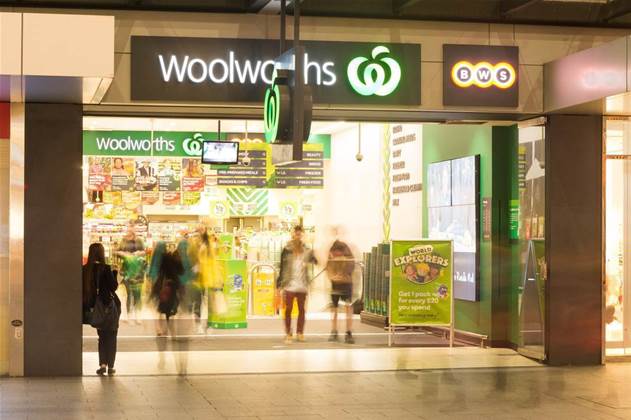Food, grocery, liquor and pokie conglomerate Woolworths has sunk at least $100 million into a “digital infrastructure” overhaul of its operations that spans across customer data, online ordering, end-to-end supply chain automation and loyalty.

Listed under costs associated with strategic initiatives, the transformation warchest is revealed in the company’s annual results.
The big spend comes as the retailer revealed its recently upgraded online ordering systems have punched through the $1 billion thanks to its new ‘collect’ facility that allows shoppers to grab pre-ordered groceries from the stores.
The headline items in the FY 2018 strategic spend are cited as “building digital and data capability in WooliesX and supply chain initiatives to drive benefits in the year and future years,” Woolie’s annual results statement said.
Revealed by iTnews in July 2017, WooliesX is the retailer’s high profile push to create a natively digital enterprise within its core operation that can then be fanned out across business lines to bring the rest of the businesses along for the ride.
Since then the company has made a secretive foray into IoT sensor driven supply chains in an effort to drive efficiencies.
Significantly, WooliesX has been given its own leadership team and inner-city Sydney headquarters in a deliberate effort to allow it to flourish without being subsumed by Woolies’ larger operational demands.
The results paint a picture of a company working to keep pace with a rapidly shifting consumer and retail landscape including when, where and how Australians shop.
Woolworths booked around $60 million in incremental costs it said resulted from “evolving customer needs and shopping patterns including increased trading on weekends.”
A further $30 million in costs was sheeted back to “structural inflation” that was in part attributed more expensive acceptance costs for NFC payments that Woolworths said came as “customers migrate from cash and EFTPOS into credit and tap tender types, which incur higher fees.”
Analysts, banks and payment schemes are all closely watching how both Woolworths and Coles structure their customer loyalty programs – which necessarily feed off payments – since interchange fees were reset by the RBA to limit cross subsidisation of products like frequent flyer points.
Loyalty programs are also front and centre of customer data mining and analytics programs because they act as a permissioned identifier to which data can be anchored.
Woolworths now puts its rewards membership at 10.9 million, with online visitation climbing to 2.1 million a week the company said. Coles cites 8 million active members for its FlyBuys scheme.
Despite the $1.1billion online sales mark being a milestone, it was still completely eclipsed by Woolworths’ Food groups whopping $37.3 billion in sales that rose 4 percent over 2017.
There were now 1070 customer pick-up locations the company said.
Woolworths booked a $1.72 billion net profit for 2018, up 12.5 percent from $1.53 billion in the 2017 financial year.


_(20).jpg&h=140&w=231&c=1&s=0)








 iTnews Executive Retreat - Security Leaders Edition
iTnews Executive Retreat - Security Leaders Edition










_(1).jpg&h=140&w=231&c=1&s=0)



